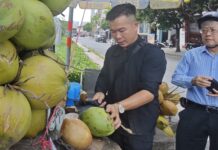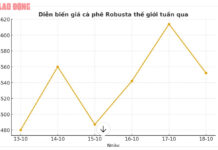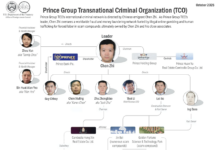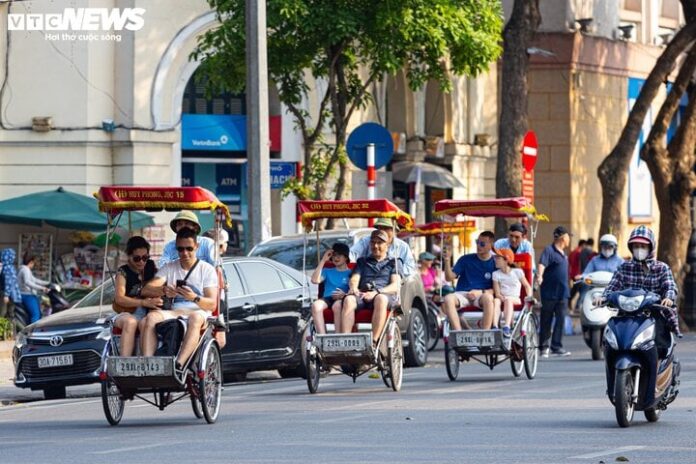The General Statistics Office recently announced that South Korea remains the largest source of international visitors to Vietnam, with nearly 2.6 million arrivals (accounting for 26%). China ranked second with 2.1 million arrivals (21.4%). These two markets alone contribute almost half of all international arrivals to Vietnam.
Taiwan ranked third with 732,000 arrivals, followed by the US with 478,000, and Japan with 380,000. The top 10 source markets also include Malaysia and Australia (281,000 each), India (272,000), Cambodia (260,000), and Thailand (248,000).

International arrivals to Vietnam surge. (Illustrative image: Minh Duc)
Based on these figures, Mr. Pham Duy Nghia, CEO of Vietfoot Travel and Vice Chairman of the Hanoi Tourism Association, believes that Vietnam’s target of welcoming 18 million international arrivals in 2024 is within reach.
According to Mr. Nghia, the period from the beginning of the year until now has been the low season for international arrivals, yet almost 10 million visitors have arrived. This is an encouraging number, and the high season is yet to come.
“The high season for international arrivals to Vietnam will be from September to the end of March next year. We are about 8 million visitors away from our target, and based on my experience, this number is definitely achievable and can even be exceeded,”
Mr. Nghia stated.
Analyzing the factors contributing to the strong growth of Vietnam’s tourism industry since the beginning of the year, the Vice Chairman of the Hanoi Tourism Association attributed it to Vietnam’s emergence as a safe destination post-pandemic.
“We have a stable political system, a long history, diverse culture and cuisine, excellent accommodation services, and tourism infrastructure that is among the best in the region. Moreover, Vietnam enjoys a favorable geographical location and natural conditions. These are our competitive advantages over other countries in the region,”
Mr. Nghia said.
Additionally, the relaxed and barrier-free entry policies have made it easy for tourists to visit Vietnam.
Despite the positive results, Mr. Pham Duy Nghia believes that Vietnamese tourism still lacks a certain level of quality. If this can be addressed promptly, tourism in 2024 will witness even more remarkable growth.
“The domestic airlines are facing a shortage of aircraft, which affects their ability to serve both domestic and international passengers. As a result, domestic airfares remain high, impacting the cost of tour packages and the travel itineraries of foreign tourists,”
he explained.
Previously, international visitors to Vietnam often chose to travel the length of the country to experience the diverse culture. However, due to the high cost of domestic air travel, many now opt to visit either the North, Central, or South regions to save money and then travel to other countries in the region. Consequently, they spend fewer days in Vietnam, use fewer tourism services, and spend less money, which indirectly affects the country’s economy.
The Vice Chairman of the Hanoi Tourism Association hopes that the issue of high airfares will be seriously addressed and resolved to further boost domestic tourism.

The tourism industry is confident of achieving its target of international arrivals ahead of schedule. (Illustrative image: Danang.agency)
Sharing the same viewpoint, Mr. Vu The Binh, Chairman of the Vietnam Tourism Association (VITA), attributed the tourism recovery to the effectiveness of the relaxed visa policy and the stimulus programs that have created a strong impetus for the industry to accelerate its efforts to attract international visitors.
In practice, in addition to visa facilitation, attracting international visitors is also due to the signing of agreements on bilateral exchange of tourists between Vietnamese and international businesses.
“Post-pandemic, new tourism trends have been rapidly adopted to adjust to changes in consumer behavior, and cooperation in exchanging tourists is also a direction of cooperation to enhance connectivity between destinations,”
Mr. Binh emphasized.
According to plans, in the second half of 2024, the Vietnam National Administration of Tourism will intensify the implementation of programs to promote Vietnamese tourism abroad, coinciding with the high season for international tourism in the last months of the year, and a series of tourism promotion and marketing activities in many key markets.









































